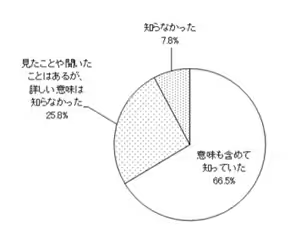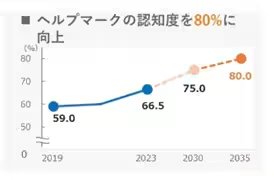

Tokyo Declares July 20 as Help Mark Day to Promote Disability Awareness
Tokyo Declares July 20 as Help Mark Day
In an effort to create a society where individuals, regardless of their abilities, respect and support one another, Tokyo has officially established July 20th as 'Help Mark Day'. This initiative aims to enhance understanding towards disabilities as part of ongoing efforts aligned with global events such as the World Athletics Championships and the Deaflympics.
Understanding the Help Mark
The Help Mark is a visual symbol designed to inform others that some individuals, who may not show visible signs of disabilities, require assistance. This could include people using prosthetic limbs, suffering from internal disabilities, or living with chronic illnesses. The Help Mark was developed by the Tokyo Metropolitan Government in 2012 and became a nationally recognized symbol when it was registered under JIS standards on July 20, 2017. Today, it is utilized across all prefectures in Japan.
Where to Obtain the Help Mark
The Help Mark can be found at various locations, including:
- - Tokyo Metro subway stations
- - Toei bus depots
- - Arakawa tram service offices
- - Nippori-Toneri Liner stations
- - Yurikamome and Tama Monorail stations
- - Tokyo Welfare Centers for Persons with Disabilities
- - Tokyo metropolitan hospitals
Efforts for Awareness and Promotion
To raise awareness about the Help Mark, the Tokyo government is launching a series of promotional activities including:
- - Social media advertising using videos
- - Lighting up the Tokyo Metropolitan Government Building
- - Distribution of information posters at various events and venues, including Deaflympics competition sites
How to Support Individuals Displaying the Help Mark
If you notice someone wearing a Help Mark, please consider the following actions to provide support:
- - Offer your seat on public transportation like trains and buses.
- - Check in with the individual at stations or commercial facilities to see if they need assistance.
- - Provide support during emergencies to help them evacuate safely.
For more information about the Help Mark, please visit the Tokyo Welfare Bureau Help Mark page.
Historical Context of the Help Mark
- - In October 2012, the Help Mark was created and distributed on the Toei Oedo Line.
- - In 2013, the program expanded to all stations and bus depots across the Toei network.
- - The distribution of the Help Mark began on the Yurikamome and Tama Monorail in 2014.
- - In 2016, the Tokyo government began outreach to private companies to promote the Help Mark further.
- - By 2017, the Help Mark was formally adopted into the JIS (Japanese Industrial Standards).
- - As of March 2023, approximately 710,000 Help Marks have been distributed.
Increasing Awareness and Recognition
The Tokyo government aims to improve the recognition of the Help Mark to ensure that individuals wearing it receive the assistance they need in various situations. According to a 2023 internet survey by the Tokyo Metropolitan Government, 66.5% of respondents were aware of the Help Mark and its purpose. The ambition is to raise this recognition rate to 80% by 2035. The initiative seeks to foster a culture where awareness and understanding of disabilities encourage individuals to reflect on their capacity for support and assistance.
For further insights, check out the Help Mark promotional video available in multiple languages, including Japanese and sign language.
This initiative contributes to the 'Tokyo 2050 Strategy', specifically under the objective of creating a symbiotic society where everyone can thrive, regardless of their disabilities.






Topics Policy & Public Interest)










【About Using Articles】
You can freely use the title and article content by linking to the page where the article is posted.
※ Images cannot be used.
【About Links】
Links are free to use.